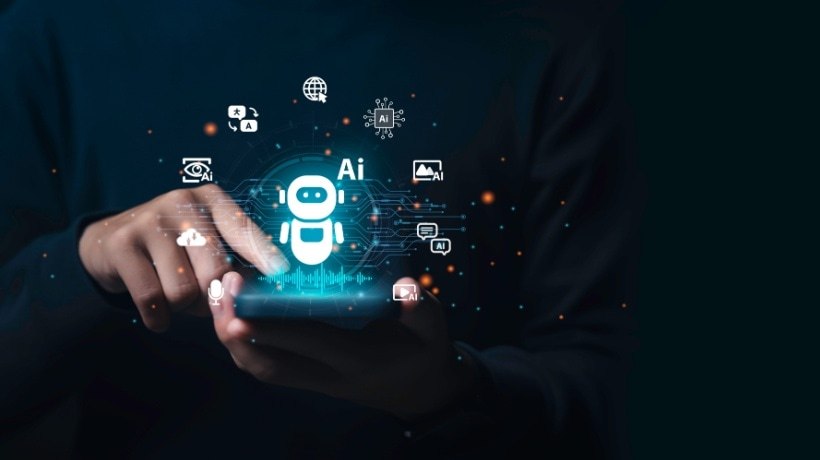How Agentic AI Agents Turn L&D Data Into Insights
In today's data-rich but insight-poor L&D environment, learning leaders are flooded with dashboards, charts, and engagement metrics—yet struggle to translate them into timely, impactful action. The question isn't whether organizations have data. It's whether they're using it well enough to drive behavior change, close skills gaps, and personalize learning experiences at scale.
This is where agentic AI—an autonomous, goal-driven AI agent—begins to redefine the rules of learning analytics. Instead of humans combing through endless dashboards, these AI agents continuously interpret learning data, detect patterns, make predictions, and act on insights in real time. Agentic AI doesn't just measure learning outcomes. It actively improves them.
In this article, you'll find...
- The Problem With Traditional Learning Analytics
- Enter Agentic AI: From Passive Reports To Active Learning Intelligence
- From Data To Decisions: How Agentic AI Changes The L&D Workflow
- Real-World Scenarios: What Agentic AI Looks Like In Action
- Beyond Dashboards: From Measurement To Momentum
- The Human + AI Partnership
- The Future Of Learning Analytics Is Autonomous
The Problem With Traditional Learning Analytics
Most organizations already use some form of learning analytics—tracking completion rates, quiz scores, participation levels, and feedback. Yet, these insights often remain descriptive rather than actionable. A typical scenario looks like this:
- Data is gathered across multiple learning systems (LMS, content libraries, feedback tools)
- Analysts compile monthly or quarterly reports.
- L&D leaders review metrics like "time spent per course" or "engagement score."
- Actions are taken after the fact—when performance issues or disengagement are already visible.
The result? Reactive decision-making, delayed interventions, and missed opportunities to engage learners in the moment. In the era of digital learning and hybrid work, static dashboards and periodic reports simply can't keep up with the pace of change. What's needed is a system that doesn't wait to be asked—it acts when something matters.
Enter Agentic AI: From Passive Reports To Active Learning Intelligence
Unlike conventional AI systems that rely on user prompts or manual configuration, agentic AI operates autonomously within defined goals and constraints. These agents continuously observe learner behavior, interpret context, and trigger decisions or actions without human micromanagement. In an L&D setting, agentic AI agents can:
- Monitor engagement in real time across multiple training programs.
- Detect early signs of disengagement or learning fatigue.
- Correlate performance data with skills competency frameworks.
- Recommend personalized learning paths or microlearning modules.
- Notify managers or mentors when learners need intervention.
Think of them as digital co-pilots for L&D analyzing signals that humans might miss and acting before small issues become big performance gaps.
From Data To Decisions: How Agentic AI Changes The L&D Workflow
To understand how agentic AI revolutionizes learning analytics, let's look at three core transformations:
1. Continuous, Autonomous Monitoring
Traditional analytics depend on scheduled data pulls and manual review. Agentic AI agents, however, stay "always on." They constantly monitor learner interactions across platforms—LMS logins, course progress, video completion rates, and even discussion activity. When engagement dips below a certain threshold or patterns deviate from the norm, the agent immediately takes note. For instance:
If an AI agent detects a consistent 30% drop in course completion for a particular module, it flags it instantly, identifies potential causes (e.g., complexity, length, or timing), and recommends restructuring or adding interactive content.
This eliminates lag time between data collection and decision-making, ensuring that learning experiences evolve dynamically.
2. Detecting Skills Gaps With Precision
Skills mapping is one of the most complex challenges in L&D. While organizations collect skills data from assessments or manager reviews, correlating it with ongoing learning performance often requires manual analysis. Agentic AI agents simplify this by automatically linking competency frameworks with learning behaviors. For example:
- They can compare quiz scores or project outputs against predefined skills benchmarks.
- Spot patterns indicating recurring weaknesses in a particular domain.
- Recommend targeted interventions like refresher modules or mentoring sessions.
Imagine an organization training its sales team on new negotiation techniques. The AI agent notices that while completion rates are high, post-training deal closure metrics aren't improving. It then identifies the specific skill area—say, "empathy-driven communication"—where learners struggle, and automatically triggers a focused practice module. That's the power of moving from reporting to responding.
3. Triggering Proactive Interventions
The most impactful aspect of agentic AI is its ability to act, not just inform. Instead of waiting for L&D teams to interpret reports, AI agents can automatically initiate personalized actions. For example:
- Detecting disengagement
When a learner's participation drops, the agent sends a personalized nudge or recommends a bite-sized microlearning video. - Flagging learning fatigue
If a user's completion rate declines over time, the agent might recommend a rest period or shift the learner to gamified content. - Suggesting mentoring
When learners consistently underperform in a skill area, the AI matches them with an internal mentor who has demonstrated proficiency. - Optimizing program design
If many learners abandon a course midway, the agent might suggest shortening modules or integrating interactive checkpoints.
This real-time adaptability transforms the learning experience from static to self-evolving—reducing attrition and maximizing engagement.
Real-World Scenarios: What Agentic AI Looks Like In Action
Let's explore a few scenarios that illustrate how agentic AI can make learning analytics operational, not observational:
Scenario 1: Early Intervention In Employee Onboarding
During onboarding, engagement tends to drop after the first week. An AI agent observes a pattern—60% of new hires stop interacting with the learning portal after Day 5. It immediately:
- Sends personalized nudges encouraging them to continue.
- Recommends a three-minute video recap to reignite interest.
- Notifies HR about potential content overload.
Within a week, completion rates rebound by 25%. No manual monitoring required.
Scenario 2: Continuous Upskilling For Technical Teams
In a software development training program, the AI agent tracks coding assessment performance. It notices recurring low scores in cloud architecture among mid-level engineers. The system automatically:
- Assigns a targeted cloud computing microlearning series.
- Schedules peer-group workshops.
- Updates the learner's skills map to reflect the identified gap.
Managers receive a summary dashboard showing improvement trends—not raw data.
Scenario 3: Personalized Career Pathing
A multinational firm wants to improve career growth visibility. Agentic AI analyzes learning data, project performance, and feedback history. It identifies patterns—employees completing advanced analytics courses tend to transition into data strategy roles faster. The agent proactively suggests similar pathways to learners who show comparable engagement patterns, aligning personal development with organizational goals.
Beyond Dashboards: From Measurement To Momentum
Most learning dashboards focus on what happened. Agentic AI focuses on what to do next. This shift is crucial because the ultimate goal of L&D analytics isn't to admire the data—it's to improve learner outcomes, skills readiness, and business performance. By combining autonomous intelligence with contextual awareness, agentic AI brings three critical advantages to learning organizations:
- Speed
Decisions and interventions occur in real time. - Scale
AI agents can monitor thousands of learners simultaneously without manual oversight. - Sustainability
Continuous optimization keeps programs relevant, personalized, and effective.
This is a leap from being data-driven to becoming intelligence-driven.
The Human + AI Partnership
It's important to clarify: agentic AI doesn't replace L&D professionals. It amplifies them. Learning designers, trainers, and program managers still provide strategic direction—setting learning goals, defining performance outcomes, and nurturing the human side of growth. AI agents handle the repetitive, analytical, and predictive heavy lifting, freeing teams to focus on creativity, empathy, and long-term development strategies. The synergy is what makes this transformation sustainable.
- Humans define purpose and ethics.
- AI ensures precision and responsiveness.
Together, they create a continuous loop of learning improvement—where every data point feeds into smarter design and better experiences.
The Future Of Learning Analytics Is Autonomous
As organizations adopt agentic AI, the definition of "learning analytics" will evolve. It will no longer be a reporting function but an active intelligence layer that drives decision-making across the learner lifecycle. Expect to see:
- Self-optimizing learning ecosystems that adapt automatically.
- Cross-platform data fusion combining LMS, HR, and productivity data.
- AI-driven career progression mapping aligned with future skills needs.
- Real-time ROI measurement linking learning outcomes directly to performance KPIs.
In this future, success won't depend on how many dashboards you have, but how quickly your systems can act on what they know.
Final Thoughts
The real power of learning analytics lies not in collecting endless data but in acting on it—and agentic AI makes that possible. These autonomous AI agents bridge the gap between insight and action, continuously interpreting learner behavior, predicting needs, and triggering timely interventions. Instead of waiting for quarterly reports or manual reviews, organizations can now rely on AI systems that respond the moment engagement dips or skills gaps appear.
For L&D leaders, this shift means moving from static dashboards to dynamic, data-driven ecosystems where every learner's journey is personalized and every decision is backed by real-time intelligence. The result is not just improved engagement or completion rates, but a learning culture that evolves with your workforce.
Agentic AI doesn't replace human expertise—it amplifies it. While trainers and program designers bring empathy, strategy, and creativity, AI ensures precision, scalability, and speed. Together, they form a partnership that turns learning from a reactive business process into a proactive growth engine.
The future of learning analytics isn't about measuring performance—it's about advancing it. And with agentic AI at the core, L&D teams can finally measure what matters and act when it matters most.


![AI Agents In Learning & Development: A Strategic Playbook [eBook Launch]](https://cdn.elearningindustry.com/wp-content/uploads/2025/08/AI-Agents-In-Learning-A-Strategic-Playbook-eBook-Launch.png)





